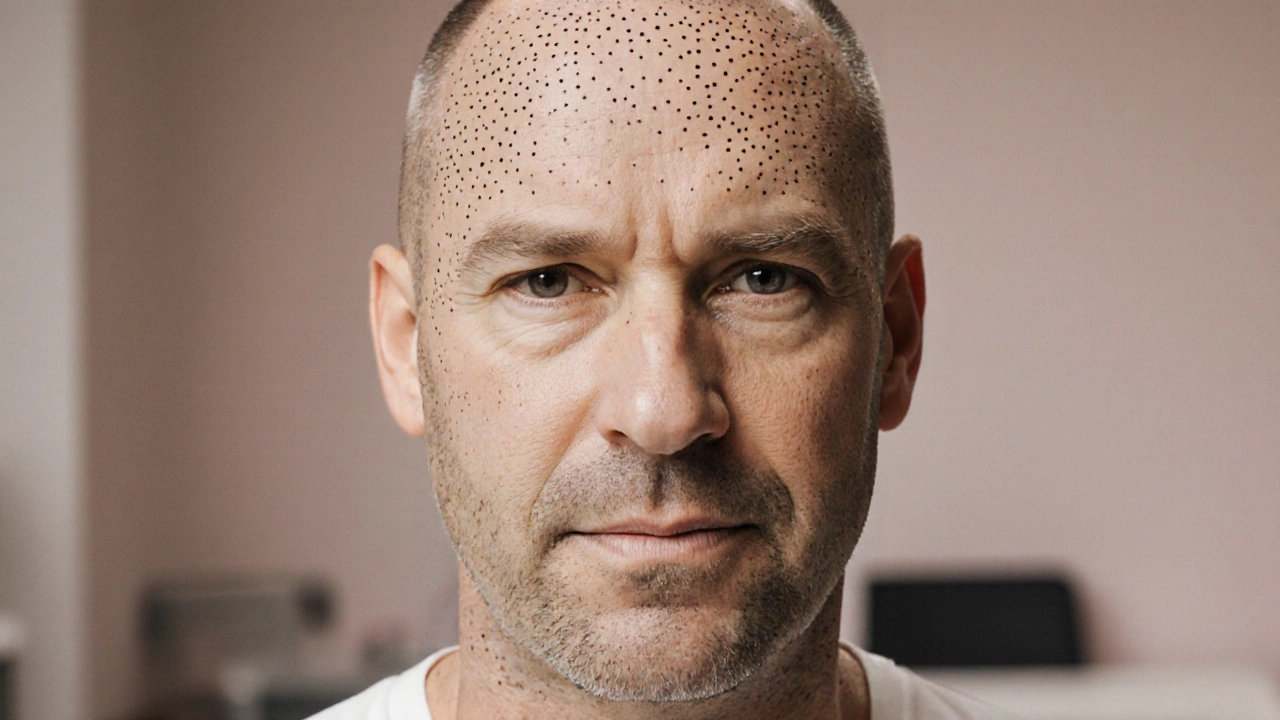Scalp Micropigmentation – What It Is and Why It Matters
When you hear Scalp Micropigmentation, a non‑surgical method that uses tiny pigment deposits to mimic the look of hair follicles on the scalp. Also known as SMP, it offers a quick visual fix for thinning hair without the downtime of a transplant. Scalp micropigmentation works by creating the illusion of density, making bald spots look filled and edges appear sharper.
One of the biggest reasons people try this technique is hair loss, the gradual shedding of hair that can affect anyone, from teenagers to seniors. Whether the cause is genetics, hormonal shifts, or stress, the result is the same visual concern, and SMP can restore confidence fast. Closely linked is alopecia, an autoimmune condition that leads to patchy or total hair loss. For alopecia patients, surgical options are often risky, making a pigment‑based solution an attractive alternative.
Another powerful use of SMP is scar camouflage, the art of blending scar tissue into surrounding skin tones using specialized pigments. After surgeries, accidents, or burns, visible scalp scars can be a constant reminder. By matching the pigment to the natural hair color, SMP hides the scar while keeping the overall look natural. This overlap shows how a cosmetic tattoo technique can serve both aesthetic and therapeutic purposes.
How the Process Connects These Elements
The procedure starts with a consultation where the technician assesses the extent of hair loss, discusses desired hairline shape, and matches pigments to your natural shade. This step ties directly to hair loss because the chosen hairline must complement the existing follicles. Next comes the numbing phase, followed by precise microneedle application—think of it as tiny dots that mimic each follicle. The skill needed here echoes the precision required in scar camouflage, where even a millimeter off can look unnatural.
After the first session, a healing period allows the pigment to settle. Most clients need two to three follow‑up sessions to build depth and achieve a realistic look. The cumulative effect is a denser appearance that reduces the visual impact of alopecia or thinning areas. Because the technique is non‑invasive, downtime is minimal, and most people return to daily activities within a day.
Maintenance is straightforward: occasional touch‑ups every 12‑18 months keep the pigment vibrant, especially if you have a lighter hair color that fades faster. This ongoing care mirrors regular hair‑care routines for anyone dealing with hair loss, reinforcing the idea that SMP is a long‑term partner in managing scalp concerns.
Below you’ll find a curated collection of articles that dive deeper into topics like safe online purchasing of medications, travel tips for mental health conditions, and support groups for scar healing. While the posts cover a broad health spectrum, they all share a common thread: empowering you with reliable information to make informed decisions—just like choosing the right scalp micropigmentation provider.
Ready to explore the specifics? The articles that follow break down everything from choosing a reputable clinic to understanding the pigment chemistry, giving you the confidence to decide if this technique fits your needs.

Scalp Micropigmentation for Androgenic Alopecia: A Long‑Term Hair Loss Solution
Discover how scalp micropigmentation offers a lasting, low‑maintenance solution for androgenic alopecia, with step‑by‑step guidance, cost insights, and expert FAQs.
More Detail